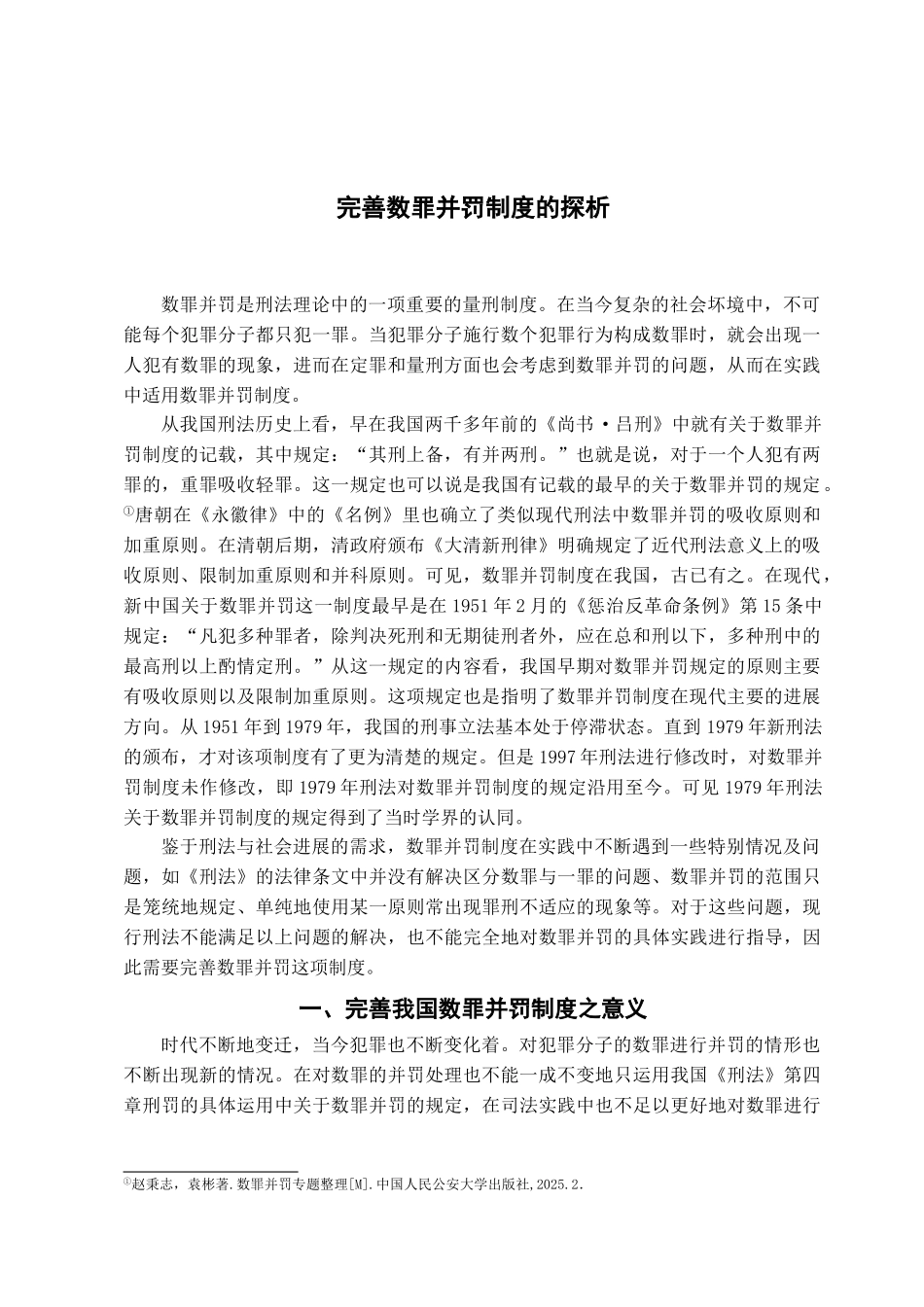AbstractThe multiple crimes in the Penal Code is an important Criminal Code conviction and sentencing on how the system, which runs through the practice of criminal conviction and sentencing process.China's current Criminal Code, Article 69, Article 70 and Article 71 of the required system of the graft, but the law requires that the narrative text is more complex, yet with specific individual issues, resulting in judicial practice still there are some problems affecting the realization of legal justice. In this paper, the significance of perfecting graft system, discusses the status of this system in China, pointed out that the total problem, and with the civil law countries of the graft system in comparison to the number of proposed crime and improve our penalty system, the initial proposals to improve China's graft system benefit.Key words: multiple crimes; the number of crimes; guilt suiting完善数罪并罚制度的探析数罪并罚是刑法理论中的一项重要的量刑制度。在当今复杂的社会坏境中,不可能每个犯罪分子都只犯一罪。当犯罪分子施行数个犯罪行为构成数罪时,就会出现一人犯有数罪的现象,进而在定罪和量刑方面也会考虑到数罪并罚的问题,从而在实践中适用数罪并罚制度。从我国刑法历史上看,早在我国两千多年前的《尚书·吕刑》中就有关于数罪并罚制度的记载,其中规定:“其刑上备,有并两刑。”也就是说,对于一个人犯有两罪的,重罪吸收轻罪。这一规定也可以说是我国有记载的最早的关于数罪并罚的规定。①唐朝在《永徽律》中的《名例》里也确立了类似现代刑法中数罪并罚的吸收原则和加重原则。在清朝后期,清政府颁布《大清新刑律》明确规定了近代刑法意义上的吸收原则、限制加重原则和并科原则。可见,数罪并罚制度在我国,古已有之。在现代,新中国关于数罪并罚这一制度最早是在 1951 年 2 月的《惩治反革命条例》第 15 条中规定:“凡犯多种罪者,除判决死刑和无期徒刑者外,应在总和刑以下,多种刑中的最高刑以上酌情定刑。”从这一规定的内容看,我国早期对数罪并罚规定的原则主要有吸收原则以及...


